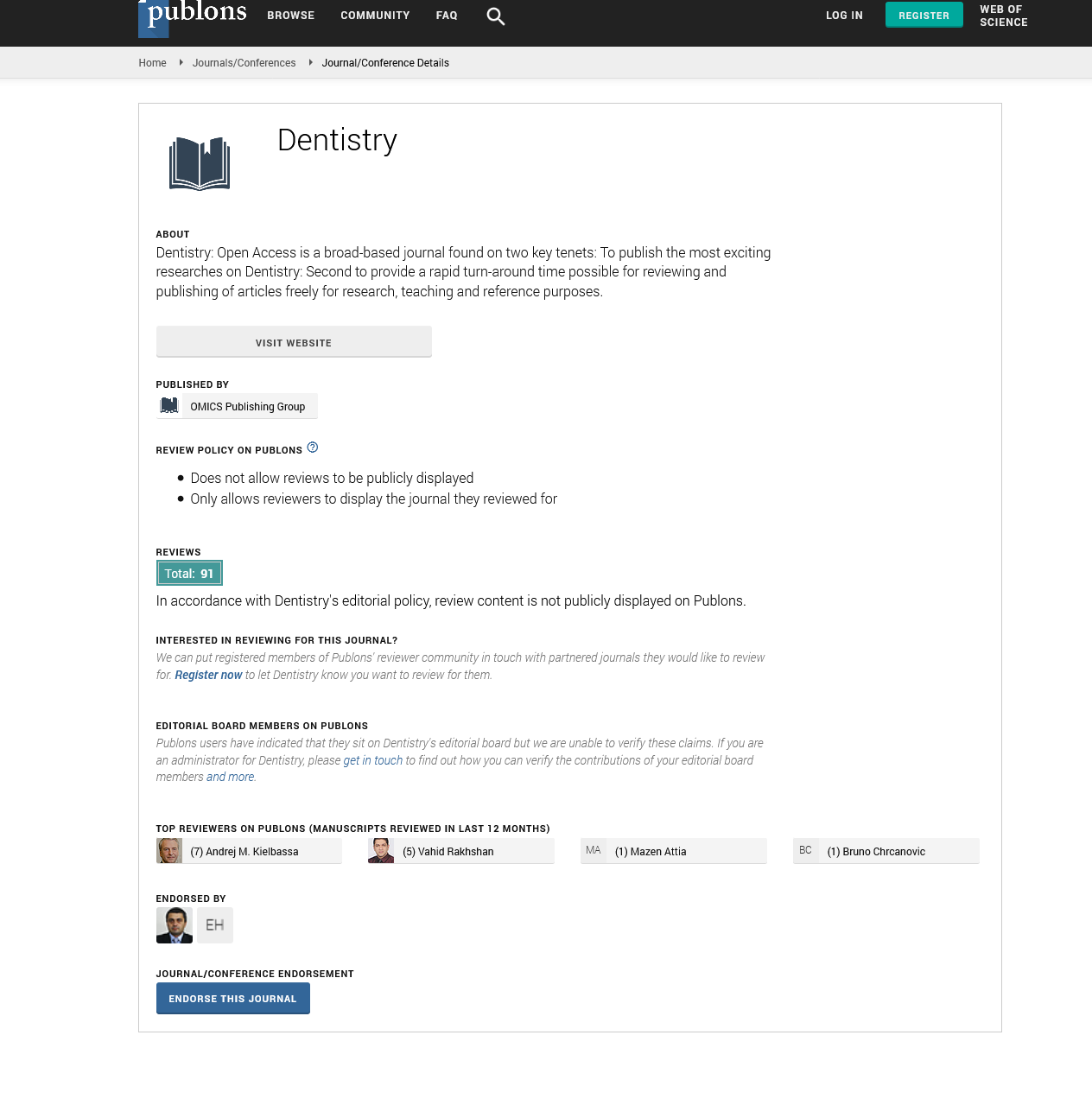Citations : 2345
Dentistry received 2345 citations as per Google Scholar report
Indexed In
- Genamics JournalSeek
- JournalTOCs
- CiteFactor
- Ulrich's Periodicals Directory
- RefSeek
- Hamdard University
- EBSCO A-Z
- Directory of Abstract Indexing for Journals
- OCLC- WorldCat
- Publons
- Geneva Foundation for Medical Education and Research
- Euro Pub
- Google Scholar
Useful Links
Share This Page
Journal Flyer

Open Access Journals
- Agri and Aquaculture
- Biochemistry
- Bioinformatics & Systems Biology
- Business & Management
- Chemistry
- Clinical Sciences
- Engineering
- Food & Nutrition
- General Science
- Genetics & Molecular Biology
- Immunology & Microbiology
- Medical Sciences
- Neuroscience & Psychology
- Nursing & Health Care
- Pharmaceutical Sciences
The efficiency of orthodontic mini-screw implants during incisors intrusion: A systematic review and meta-analysis
Joint Event on 36th International Conference on Dentistry & Dental Marketing & 18th Annual Meeting on Oral Care & Oral Cancer
October 24- 25, 2018 | Boston, USA
Ahmed Ibrahim Atalla and Mai Hamdy Aboul Fotouh
Cairo University, Egypt
Scientific Tracks Abstracts: Dentistry
Abstract:
Introduction: The aim of this systematic review was to compare the effectiveness of temporary anchorage devices (TADs)
and conventional segmented arches (CSA) during incisor intrusion in adult patients with a deep bite and their adverse effects.
Methods: Four electronic databases were searched. In addition, articles were manually searched for using the reference lists
of relevant articles, grey literature and peer-reviewed orthodontic journals. Data from the retrieved articles were selected and
evaluated by two independent reviewers using a new systematic review software program, DistillerSR. A meta-analysis of raw
mean differences was performed.
Results: Initially, we retrieved 9600 articles, but the selection process resulted in 6 articles. The included studies ranged from
low to high in quality. Meta-analysis showed that TADs enabled 0.78 mm more upper incisor intrusion than the conventional
method (95% CI=0.28 to 1.29). There was no significant anchorage loss difference in the CSA group compared to the TAD
group (MD -3.68; 95% CI -7.41 to 0.05). Also, a significant molar tipping of 1.03 degrees was observed in the CSA group
(P=0.008) compared to the TAD group (MD -1.03; 95% CI -1.79 to -0.27).
Conclusions: The results of this meta-analysis showed that patients receiving TADs had 0.78 mm greater upper incisor
intrusion than patients receiving the conventional treatment. This was statistically significant but not clinically relevant. No
clinical difference was found between TADs and the conventional method of anchorage loss.
Biography :
Dr. Ahmed is serving as a lecturer at Orthodontic Department, Faculty of Oral and Dental Medicine, Cairo University, Egypt
E-mail: ahmed.atalla@dentistry.cu.edu.eg

